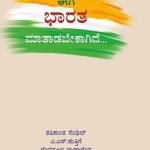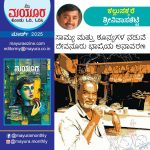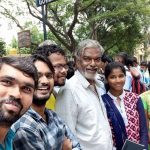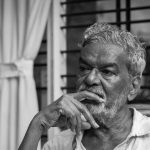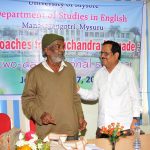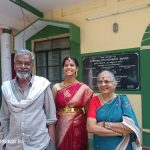A Dalit Epic called Kusumabale-Prof. V.S.Sreedhara
[Prof. V.S.Sridhar’s review of the English translation of ‘Kusumbale’ in “The book review” magazine. ಪ್ರೊ. ವಿ.ಎಸ್.ಶ್ರೀಧರ್ ಅವರು ‘ಕುಸುಮಬಾಲೆ’ ಆಂಗ್ಲ ಅನುವಾದ ಕುರಿತು “The book review” ಪತ್ರಿಕೆಯಲ್ಲಿ ಬರೆದಿರುವ ವಿಮರ್ಶೆ. ]
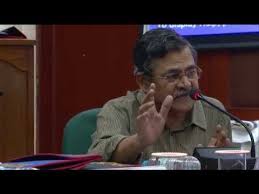
[Prof. V.S.Sreedhara- Former Professor and Head, Department of English, Vijaya College, Bangalore University Presently working as co-ordinator, Ambedkar Study Centre, Centre for the Study of Social Exclusion and Inclusive Policy, National Law School of India University, Bangalore.}
Devanoora Mahadeva’s Kusumabale, ever since it was published in 1988 in the book form (written in 1984, it was serialised in a Kannada magazine later), has evoked mixed responses from readers, activists and critics. However, everyone agrees that it is a great text, a classic in fact, unprecedented in its treatment of Dalit experience both in its form and content. Its cult status can partly be attributed to its unique narrative technique, mixing myth and social reality as well as breaking a linear narrative with effortless ease, the first of its kind in modern Kannada literature. The other reason could be the author himself, a highly respected icon in Kannada cultural and socio-cultural milieu, known for his outright and uncompromising pro-people and anti-establishment stand, shunning many coveted awards and positions. He has often taken hard and unpopular decisions, but has always tried to win over his opponents through his gentle manners and persuasions. Most recently, he refused to accept the chairmanship of the annual conference of Kannada Sahitya Parishat, a pre-eminent body of Kannadigas and Kannada literature on the ground that the State Government was not firm on its commitment to bring in a common school system and make mother tongue instruction compulsory at the primary level.
That apart, what makes Kusumabale a classic is the highly nuanced depiction of Dalit life in a language that was unfamiliar to Kannada readers. Two responses it evoked immediately after its publication still haunt the consciousness of Kannadigas. The first one was about the use of language. A noted Kannada writer and poet remarked that the novel needs to be translated into Kannada first! Steeped as it is in a regional dialect, spoken in Nanjangudu and Chamarajanagar areas in south Karnataka, it posed a real challenge to the ‘standard’ Kannada known to many. The second response is about the treatment of the theme itself. Dr. G H Nayak, an eminent Kannada critic, remarked that the novel’s unique style and narrative technique, probably not seen thus far, demanded a total reshaping of the existing canonical critical tools for a true and genuine appraisal of the text. As a fictional work on Dalit life by a Dalit writer, it had broken all narrative expectancies. It was far from what a typical Dalit text was supposed to deal with: the pangs of oppression and depravation faced by Dalits; pains and angst of the exploited community; a tone laced with an indignant critique of society governed by the values of upper castes. The novel, of course, has all these elements but in a subdued mode that is more reflexive and meditative than accusative or confessional. Thus it breaks the oppressor-oppressed dichotomy, but dwells deep into the lives of people – both Dalits and non-Dalits – in all its minute particularities. Moreover, it deploys a story telling technique drawing from mythical and oral traditions, with paragraphs and even sentences left hanging loose, but still evocative and highly suggestive. Above all, the narrative is infused with mythical and fabular elements where both animate and inanimate characters speak out their tales, at once driving the plot to and fro and contributing to the multiple narrative voices. The old four-poster bedstead tells its own story. Even human feelings like worry and disenchantment are personified and they get out of the persons they inhabit and engage in a close dialogue with them! In fact the novel begins with a nightly assembly of guardian light spirits, the Jothammas, sharing their stories and woes with others. It is from them that we first hear about the secret meeting of Channa, a Dalit boy, and Kusuma, an upper caste girl, whose tragic separation and subsequent disappearance of the boy provide a broad framework for the novel. The scene reminds one of the typical opening scenes of a Shakespearean play, setting the mood, tone and atmosphere of what follows.
The relationship between Kusuma and Channa is like a ur text of the novel, signifying the all too familiar and recurring theme of atrocities on Dalits till date. (The brutal murder of Dalit boys for having an affair with an upper caste girls in Tamil Nadu and Karnataka recently are just two contemporary examples.) Though they provide the background to the plot, they are not foregrounded as the protagonists as in a realistic novel. A host of other characters including the inanimate objects inhabit the novel encompassing three generations. The ingeniousness of Mahadeva lies in developing this two-line story of estranged lovers into a metanarrative of oppression and victimisation which affect people of various communities by deploying what can be called a diegetic mode of narrative, where the authorial voice is only one among many. The author is a participant observer, and by treating the human and the non-human with the same logic of narrative the reader also gets invited to be a part of the process of participant-observer. Dalit texts which operate on a confessional mode treat the intended reader an outsider who needs to be told how Dalits live their lives. In Mahadeva, storytelling is not just a technique of narration, but an ethical choice and the readers are repeatedly invited to be a part of this choice. The invitation to the reader starts at the very beginning where the entire outline of the novel is told in brief – 18 lines to be precise. The elaboration that follows offers an insight into the various ways in which people living at the margins struggle to survive and fight against odds of life, some with their wily cleverness like Yade Gowda or Uncle Garesidda, some with their firm faith in human relationships like the parents of Channa and some taking recourse to the extraordinary healing power of Life itself like Turamma. However, the novel does not engage only with the past. It also travels up to the present, to Dalit Sangarsh Samithi (DSS) a prominent Dalit organisation of which Mahadeva was an active member. Here we see many of his close associates in DSS, including himself, depicted as characters caught up in the rigmarole of ‘liberating’ Dalits from their tradition. Mahadeva is critical of DSS and employs all the wit and sarcasm at his command to present the activists of DSS as preoccupied with their own ideological frame which is often not consonant with the lived realities of Dalit life. In his highly acclaimed theatre production of the novel presented some two decades ago, the gifted director, C Basavalingaiah, depicted the scene with various Dalit leaders carrying a wooden frame around their necks!
This section in the novel, obviously, has not gone well with the activist friends and Mahadeva is often accused of showing DSS activists (and their ideological notions) in bad humour. The most pungent of this criticism emerges when Uncle Garesidda, extremely spirited and talkative character, meets the communist doctor who has come from the city to participate in the DSS programme organised in the village. Garesidda asks:
‘And what was that you said in your speech last night? Couldn’t catch the first or the last of it, doctor!’
The doctor now put on a serious look and with no ahaha to go before: ‘I was pointing to …the contradiction…’he said, and the tip of his tongue now snared and drawing blood, the good doctor could laugh no more.
‘Oh! That! Get it … now I get it…! Thought you meant something else…! Garesidda said, dusting his linen jubba. (p.103)
Under the veneer of sarcasm lies the irony: if contradiction is the way of life for one, it exists as a theoretical construct for the other. In sheer contrast to this piece depicted in a lighter mood, there is the most poignant moment in the novel where Turamma, a relative of Channa (who has been murdered for having loved Kusuma) is seen fighting against Fate to save her grandchild. Here Mahadava’s lines are most evocative and acquires the magical quality of a ritual to ward off the evil spirit of death, while in the backdrop we get to know about Channa’s murder. He privileges neither, but there is a subtle play of irony here. While thousands of such murders as Channa’s go unnoticed, no one seems to even have an idea about the life of struggles of Dalits. It has its own dignity and the novel needs to be duly credited for having provided us with a glimpse into the interior landscape of Dalit cosmology.
Many Kannada critics have wondered as to where they should trace the lineage of this novel: in the oral (desi) or the written (marga) tradition? One can argue for or against both. The novel is dedicated to the memory of ‘ancestor’ Malai Maadeshwara, the central figure of a well-known oral epic venerated by Dalits and other ‘lower’ castes in Karnataka. It is an important non-vedic text that stands in sharp contrast to the mainstream Vedic-Purana tradition. The novel also draws heavily from the narrative style of this oral epic, mixing the metaphysical and the social with effortless ease, and in doing so seems to position itself against the social realism of the modern novel.
On the other hand, Kusumabale’s lineage can also be traced to several great classics in Kannada beginning with the 8th century poet Pampa in terms of their tradition of employing multiple centric narratives. Following this it can be argued that Kusumabale continues a classical trait, albeit in a new avatar as it tells the stories of the most ordinary but no less heroic in their struggle. However, this argument does not yield any critical dividends as pointed out by some critics. Discussing the futility of such a debate, K V Narayan, a noted Kannada critic, has argued that it is more important to ask the socio-political compulsions behind creation of such a work, with its unique deployment of language and narrative than looking for lineages. The choice of a particular dialect and multiple narrative style is not merely an issue related to communication, but that of a sensibility which, by drawing attention to itself, is trying to build a new world and a world view which was totally alien to the Kannada reading public. The breaking of easy communication or chronology of events may also be read as a way of capturing the tragic dimensions of a community whose voices are either robbed or silenced by the elite, upper caste modes of narration.
Kannada novel, as in many other Indian languages, had to contend with the vexed question of grappling with an alien form while telling a native story. Kusumabale can be seen as a text that seems to have wriggled out of this dilemma by creatively blending the two native forms to tell a modern story and yet stand in direct opposition to realistic narratives. The style becomes a political statement thus. If a Marquez tried to find an answer to this in his magic realism (which is the West’s way of describing him), Mahadeva seems to have turned to the native tradition of orality. In this he is in company of a writer like Soyinka and, more particularly in the use a regional dialect, he seems to be closer to a novelist like Gabriel Okara whose novel ‘Voice’ manages to bend the English language to suit the idiom of his native dialect. One is reminded of the statement that all great experiments in literature are about the form and not the content. However there is a catch here. When a novelist deploys a style which is so unique, it also imposes limitations on further experimentation. Either one has to imitate himself or abandon the style altogether and go in search of a new form. That perhaps explains why Mahadeva’s literary output is less in terms of quantity.
The critical appraisal Kusumabale has received in Kannada can be broadly divided into two streams. The recurring theme of human relationships that the novel engages with cutting across various sections of society has made some critics to look for certain universals, in spite of the multiple narrative voices. This search is augmented by the last scene where Channa’s father, who believes that Channa is somewhere in a big city doing well, is seen waiting for his return. To his wife’s query whether he would ever come back, he says:
‘And why won’t he, woman? The bonds of blood…they’re big, bigger than everything else…my dear…!’ (p.117)
The line has become a catchword in Kannada and for many it signifies the dominant resolution of the novel. This can be summed up as the mainstream approach with its penchant for a liberal humanist ideology of appreciating the novel for its artistic value. A more nuanced approach to the novel tries to go beyond this humanistic approach and locate the novel within a Dalit cosmology which squarely questions several received notions and value systems usually upheld by the mainstream ideology. In other words, the second stream tries to read the novel as a Dalit epic, with its roots in non-Brahmanical oral tradition.
The language of Kusumabale, steeped as it is in regional dialect and native idiom, is a real big challenge for a translator. Let alone English, it is difficult to translate it into any other Indian language. Many years after it was published the text was recast and set into oral Kannada rhythm by Dr. L Basavaraju a senior and expert scholar. As it was the text required loud reading and now the layakari version made it even more poetic and more demanding. The novel tells the story of three generations in about one hundred pages and the sheer economy of expression poses yet another challenge for translation. The fact that earlier attempts at translating this text were abandoned, for various reasons, also points out to the utter difficulty involved in rendering this text into a different syntax. Given the forbidden task, it should be mentioned that Susan Daniel has come out with an extremely readable version of the text, keeping pace with the original rhythm and bending the English syntax as far it allows. As she rightly comments in her Translator’s note, the challenges she faced were many: ‘There being no pan-Indian dialect of Indian English to speak of, nor a local Kannada variant to lean on, the decision was to stay with tone and travel with cadences, relying on pace as pointer, the strategy, if once call it one.’ (p.xiii)
It is inevitable that something invariably gets lost in translation, but what is lost is gained here through a fidelity to the rhythm and a serious and sincere attempt at recreating it in English. The most evocative passages in English are the ones where the cadence of the original flows smoothly as the following lines demonstrate. Here Turamma has managed to save Eery’s child from dying:
The copper bowlful
set deep in the child’s eyes
and Eery’s child’s face all of a smile
stricken by that smile
Death deliberately leaves
that open mouth–open
those wide open eyes–wide open
and walks away-way and away! (p.77)
The process of translation has seen many shifts, and it is now argued that the best way to handle a non-Western text would be to make the translation a self-conscious act, wherein the readers are made aware that they are indeed reading a translated work. Every page in the English version of Kusumabale does that but in a most effective way. Foot notes and glossary are avoided and many native expressions are kept intact without obstructing the flow of the narrative and yet sustain the flavour the original. It is well edited, and the newly added chapter headings are a welcome addition to the text.
The ultimate appraisal of a translated work could come from non-native speaker. I gave the translation to two non-Kannada readers who had no clue either about the text or the author to seek their opinion on the translation and what they felt on reading the book. Though they did miss out on some detail – which is perhaps due to the unfamiliarity with the cultural ethos of southern Mysore – they had got most of the novel right and, more crucially, they said they could feel how the story would have flown in the original. That perhaps is the best testimony for the translator.
Kusumabale is a very important text which should have come out in English long ago. That both Susan Daniel and the editors at OUP have made it possible now deserves to be appreciated.
———————————————————————————————————
Author: Devanura Mahadeva
Title : Kusumabale
Translated from Kannada by: Susan Daniel
Edited by: Mini Krishnan and Chetan Ahimsa
Kannada text published: 1988
English translation: 2015
Pages: xvii+121
English Translation: Oxford University Press
Price: Rs.250
ISBN-13:978-0-19-945701-4
